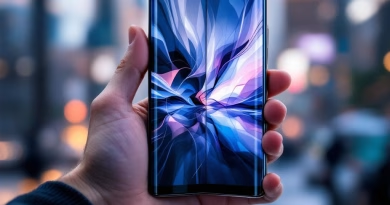AirPods Pro 2 vs. Sony LinkBuds S II vs. Bose QuietComfort Earbuds: Which ANC Earbuds Win in 2025?
If you’re spending over $200 on active noise-cancelling (ANC) earbuds in 2025, you’re expecting more than just decent sound. You’re paying for comfort, clarity, battery life, noise blocking, and a smooth experience across your devices.
The top contenders in this space — AirPods Pro 2 (USB-C), Sony LinkBuds S II, and the latest Bose QuietComfort Earbuds — all claim to deliver studio-quality sound in your pocket. But which one actually justifies the premium price tag?
Here’s how they compare based on real-world experience and what matters most to users in 2025.
Design & Fit
- AirPods Pro 2: Apple’s stemmed design is still lightweight, sleek, and iconic. The silicone tips come in four sizes now, and the fit remains stable for most users — especially those in the Apple ecosystem.
- Sony LinkBuds S II: Small, rounded, and nearly invisible when worn. They’re the most discreet of the three and feel featherlight — great for all-day wear.
- Bose QC Earbuds (2025): Still the bulkiest, but with significant ergonomic refinements. The new finless design improves comfort and stability, especially for passive listeners.
🎧 Fit Insight: Sony wins for comfort. Apple fits seamlessly into the iPhone lifestyle. Bose is bulkier but designed to stay put in any condition — including workouts and long flights.
Noise Cancellation
All three perform excellently — but with nuances.
- AirPods Pro 2 use Apple’s Adaptive Transparency and dynamic ANC that adjusts in real time. It works impressively well for everyday noise like engines, crowds, and wind.
- Sony LinkBuds S II feature AI-enhanced adaptive sound control, adjusting based on your location and activity. It’s effective, though a bit less aggressive than the AirPods.
- Bose QuietComfort still reigns for pure silence. Their ANC blocks out deeper, consistent sounds like AC hum or airplane cabin noise better than any competitor.
🔇 Noise Blocking Tip: Bose is for travelers and deep-focus workers. AirPods are best for seamless transitions between noise and conversation. Sony offers flexibility without pressure buildup.
Sound Quality
- AirPods Pro 2: Balanced, clean sound with improved bass and spatial audio. Works best within Apple Music or Dolby Atmos-optimized apps.
- Sony LinkBuds S II: Excellent midrange and natural highs. Slightly warmer than AirPods. Great with LDAC support for Android users who stream high-resolution audio.
- Bose QC: Deep, rich bass and powerful lows without distortion. Very immersive for movie watching and beat-heavy music.
🎶 Sound Insight: Bose leads in bass depth. Sony feels more natural for podcasts and vocals. AirPods offer the best integration for 3D audio and immersive Apple ecosystem experiences.
Battery Life & Charging
| Feature | AirPods Pro 2 | Sony LinkBuds S II | Bose QC Earbuds |
|---|---|---|---|
| Earbud Life | 6 hours | 6 hours | 6 hours |
| With Case | 30 hours | 24 hours | 24 hours |
| Charging | MagSafe, USB-C | USB-C | USB-C, Qi Wireless |
AirPods edge out slightly with MagSafe support and longer total battery life. Sony and Bose perform well but have shorter case capacity.
Smart Features & Ecosystem
- AirPods Pro 2: Best-in-class for iPhone/Mac users — automatic switching, spatial audio, Find My, and now conversation awareness.
- Sony LinkBuds S II: Work well across platforms; include Adaptive Sound Control and Android Fast Pair.
- Bose QC: Strong app support, customizable EQ, and now supports multipoint Bluetooth.
💡 Ecosystem Advice: If you’re all-in on Apple, AirPods are unbeatable. If you use multiple platforms or Android, Sony wins in balance. Bose prioritizes sound and isolation above “smart” extras.
🏁 So, Which One Should You Use?
- Choose AirPods Pro 2 if you’re deep in the Apple ecosystem and want a mix of intelligent features, great ANC, and spatial audio.
- Choose Sony LinkBuds S II if comfort, cross-platform flexibility, and natural sound matter most — especially for Android users.
- Choose Bose QC Earbuds if you want absolute noise cancellation, powerful bass, and a focused, immersive listening environment.
All three are excellent — but they serve different listening personalities.


